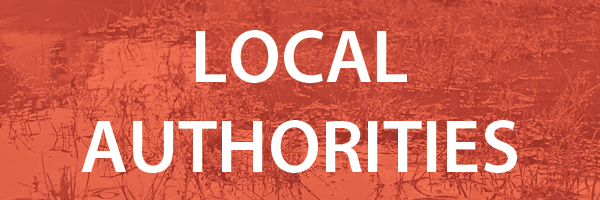Derby Flood Prevention Scheme (2016)
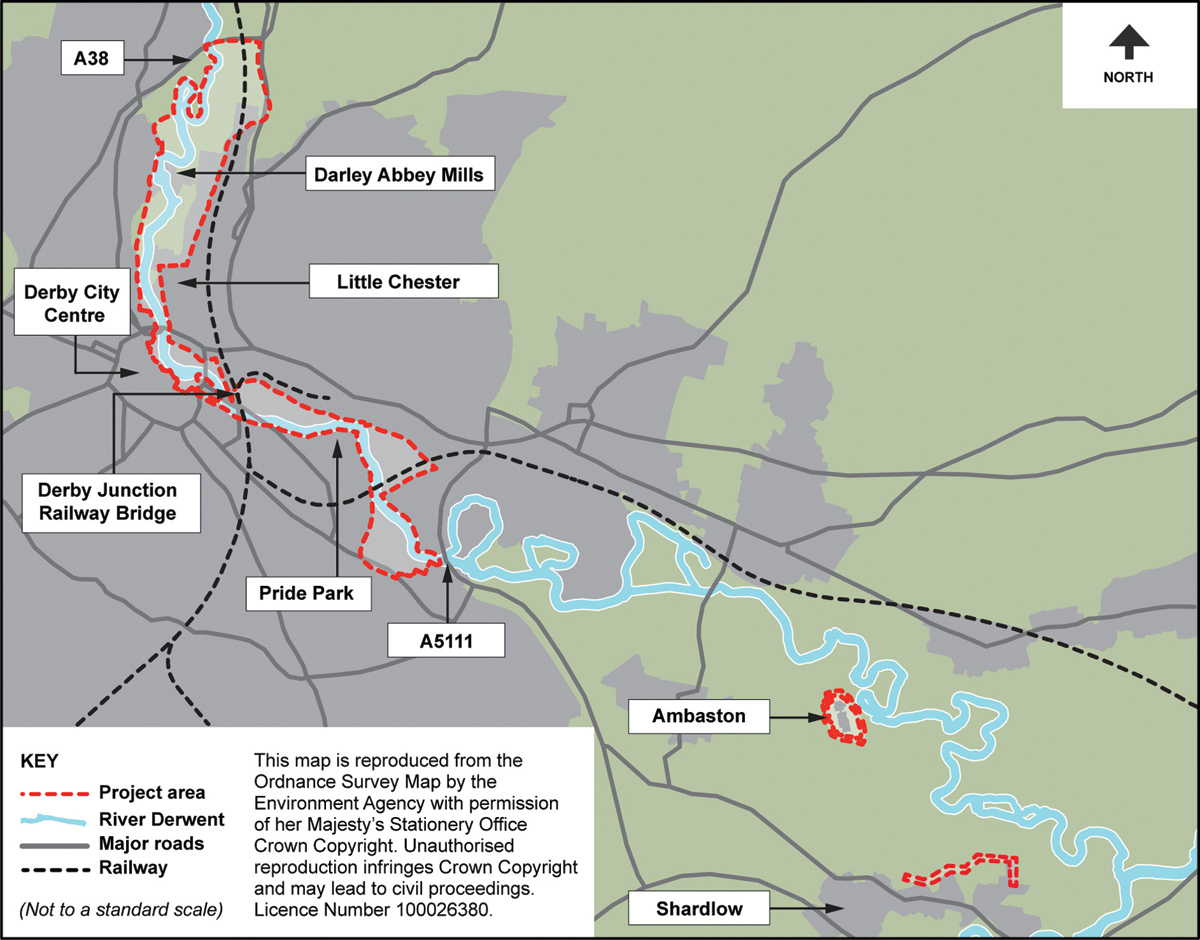
Our City Our River - Overview of entire scheme
Our City Our River is a project to reduce the risk of flooding in Derby. The city’s existing flood defences are reaching the end of their design life, meaning a severe flood event would have a major impact on homes, businesses and infrastructure; as well as several important heritage sites. More than 2,000 properties are at risk from flooding. Our City Our River is ambitious in scope. The £95m project is intended not just to reduce flood risk to properties, but additionally help rejuvenate areas of the city on the banks of the River Derwent. As well as safeguarding people and property from a flood with a 1 in 100 chance of occurring each year the project will re-establish a positive relationship between Derby and its river by helping realise the recreational and economic potential of brownfield sites currently at risk of flooding.
Introduction
Combining flood management with urban regeneration in Our City Our River’s remit increases the sources of finance from which the project can draw. As well as direct funding from the Environment Agency (EA) the project is receiving money from Derby City Council, Local Enterprise Partnership D2N2 and, most innovatively, from third party developments which will simultaneously benefit from regenerated land and provide elements of the flood defences within their redevelopment proposals.
Our City Our River is the principal urban element of the Lower Derwent Flood Risk Management Strategy, which was formerly adopted by the EA in January 2011. The strategy concluded that the most appropriate way to reduce flood risk would be to realign the city centre flood defences away from the river. This would make more space for floodwater and reduce the throttling effect of existing riverbank and bridge structures. If the defences were raised on their existing alignment this would increase flood risk to upstream areas and adversely impact on key assets of the Derwent Valley Mills World Heritage Site.
Our City Our River
Our City Our River is essentially a complex series of sites which need to be considered as a single coordinated scheme. The overall scheme covers 13km of the River Derwent from the A38 to the north of the City down to the confluence with the River Trent at Shardlow. The scheme is divided into three packages which have been designed to deliver a cumulative reduction in flood risk as each package is completed, whilst not increasing flood risk to upstream or downstream areas.
- Package 1: Located between the Alfreton Road Industrial Estate in the north and Sowter Road in the south, with the exception of works at Darley Abbey Mills Bridge.
- Package 2: Located at Breadsall, Darley Abbey Mills Bridge, all sites between North Riverside and Meadow Lane, and sites at Derby Junction Railway Bridge, Pride Park, Ambaston and Shardlow.
- Package 3: Located from Chaddesden Sidings and Triangle and Raynesway on the north side of the river, plus Alvaston Park on the south side of the river.
In its entirety the project is not scheduled for completion until 2023.
In April 2015 Derby City Council awarded the £11.7m design-and-build Package 1 contract to GBV, a joint venture between Galliford Try and Black & Veatch (now Binnies), under the Environment Agency’s Water & Environmental Management (WEM) Framework. GBV secured a place on the WEM framework in 2013 and is delivering many other major projects including the EA’s River Thames Scheme.
The construction of Package 1 of Our City Our River was scheduled for completion at the end of 2017. Collaborative working between the JV partners, and turning the sometimes unhelpful presence of archaeological sites from problem to advantage, means planned completion has been brought forward to August 2017.
Archaeology
Human settlement on the land currently occupied by central Derby pre-dates the Romans. As a result, managing archaeological risk is on the project’s critical path – and is a risk borne entirely by GBV. For Package 1 the remains of a Roman fort, which is a Scheduled Monument, at Little Chester presented one of the greatest challenges.
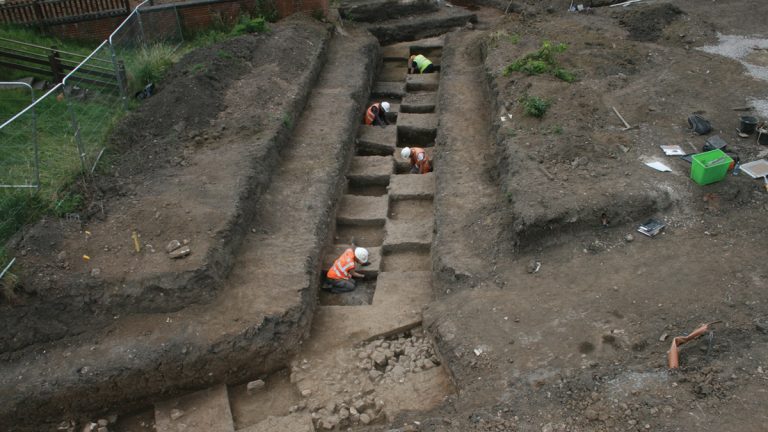
A Roman building, possibly a stable block under excavation in the NW corner of Little Chester Roman fort (external walls in foreground and showing the excavation of the building interior on a systematic grid basis) – Courtesy of GBV
The line of the flood defences had to take account of the fort and GBV has involved the key stakeholders, including Historic England, from the outset of the design proposals. Originally various archaeological evaluation trenches were opened to inform the decision-making process on the proposed defence alignment. GBV then worked closely with archaeological sub-consultant, Trent & Peak Archaeology, to prepare and agree the Archaeological Written Scheme of Investigation which stated exactly how we would mitigate the impact on the archaeology. This includes excavating the full length of the proposed sheet piled foundation; processing finds and artefacts on site; and specialist off-site assessment of finds to contribute to meeting regional archaeological research objectives which improve our understanding of Roman life in Derby.
Whilst the archaeological mitigation programme could have been a project in itself, GBV owned the archaeological risk and had to factor this work into their programme of the design and construction of flood defences. In managing the programme risk, all archaeological finds were processed on site which provided the design team with real-time information which they used to quickly agree design amendments with the key stakeholders as the archaeological works progressed. This has allowed the start of construction at Little Chester to commence around 3 months earlier than originally planned and has delivered significant savings.
The decision to process archaeological finds on site had other benefits. Community engagement, a central tenet of Our City Our River’s execution and outcomes, was greatly enhanced by involving local archaeological and historical groups in processing the material. In addition local volunteers were able to take part in a closely supervised community dig.
Groups with concerns about the project’s effect upon the city’s rich archaeological legacy became engaged stakeholders, whose local knowledge proved valuable to GBV.
Flood defences and associated works
The resulting flood defences and associated works will improve the legibility of the fort through landscaping and the use of Roman style facing bricks on a new section of the flood defence wall. New brick piers mark the fort’s gate and, overall, the fort provides a good example of how Our City Our River is creating a symbiotic relationship between flood defences and civic amenity.
The whole approach to the archaeological mitigation has proved so successful that Historic England is likely to include the approach in its guidance on best practice, while teams from HS2 are visiting Our City Our River to learn more.
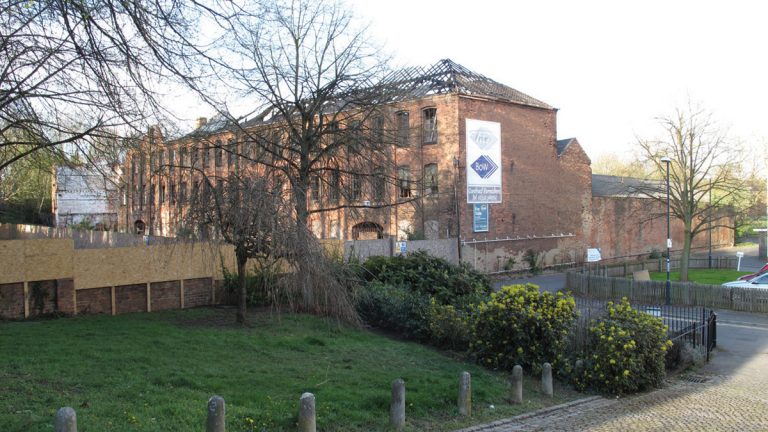
Former derlict Bath Street Mills could not be redeveloped without a strategic flood risk management strategy for the wider area – Courtesy of GBV
The archaeological mitigation has also had added further benefit to the construction stage. With civil construction projects much of the uncertainty lies in the ground. Had obstructions been found during construction ground works the team may have faced time delays and expensive piling rigs standing idle. However, the archaeological fieldwork exposed and removed significant ground obstructions, some of which were unknown as they were not marked on historical maps, in advance of construction work. The subsequent piling operations have therefore been completed in shorter durations than originally planned.
The blue corridor
To help make the creation of Derby’s blue corridor (the term coined for the remodelled channel and flood defences) efficient, and minimise impact, much attention has been paid to the remodelling or re-purposing of existing features and structures. A disused railway embankment at Handyside will be lowered by 1.5m reducing the throttling effect of the adjacent listed bridge over the river.
Similarly, a highway under pass adjacent to St Mary’s Bridge, another Scheduled Monument, will help to improve the conveyance of water through the city. These measures are critical to reducing upstream flood levels and minimising the required height of flood defences.
At Duke Street, the former derelict Bath Street Mills has been redeveloped with an integrated flood defence to provide an active frontage facing the public open space between the site and the river.
GBV identified a tension between the need to build high walls to manage floodwater and the need to open out the bankside environs to encourage public use of the space. The solution lay in using structural glass for some of the hard defences. This provided a sufficiently strong physical barrier while not impeding lines of sight, or creating the sense of a dark, enclosed area. The glass also helped facilitate the ‘natural surveillance’ the scheme sought to encourage as another way of enhancing the area’s civic amenity.
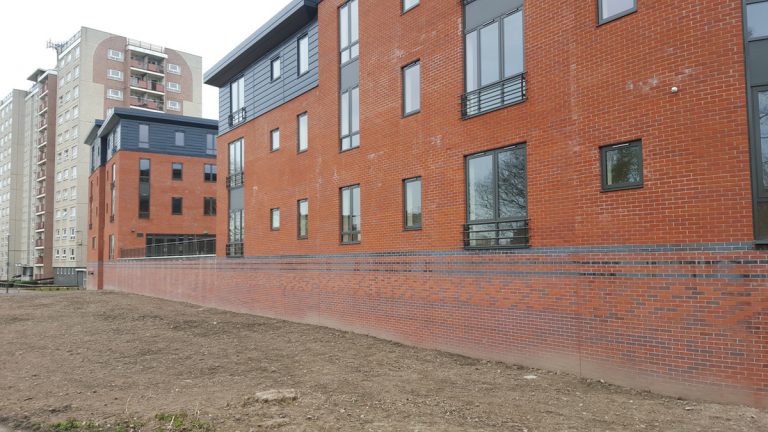
Transformation of former Bath Street Mills into a new extra care facility with an integrated flood defence – Courtesy of GBV
Fibre reinforced concrete was another area of material innovation. Rather than constructing some of the flood defences using the traditional method of building walls on top of piles, GBV choose to use sheet piles for entire sections of wall. The above-ground portion of the piles was clad in fibre reinforced concrete and facing brickwork. The cost of the larger piles was offset, by circa £200,000, because reinforcement steel and its fixing was no longer necessary.
The GBV design and construction teams worked closely together in the early stages of project development to look at the location where steel sheet piles were to be driven. In each location the risks of driving piles was considered (e.g. would noise or vibration cause the most difficulty) and quantified, where possible. The most suitable pile installation technique was then selected and the pile type selection made to ensure compatibility with this technique. For example, adjacent to a sensitive gas bottling plant it was confirmed that installation would be best achieved from across an adjacent brook. As such a long arm Movax rig was selected and U-section piles were specified to suit this. These decisions also factored into the level of site clearance required.
Conclusion
Although Our City Our River is being delivered in three packages, each package is designed to bring stand-alone benefits. So, even before the scheme is concluded in its entirety, the innovative approaches GBV has brought to Package 1 will keep people of Derby safe from flooding and help them get the most from the river at the heart of their city.
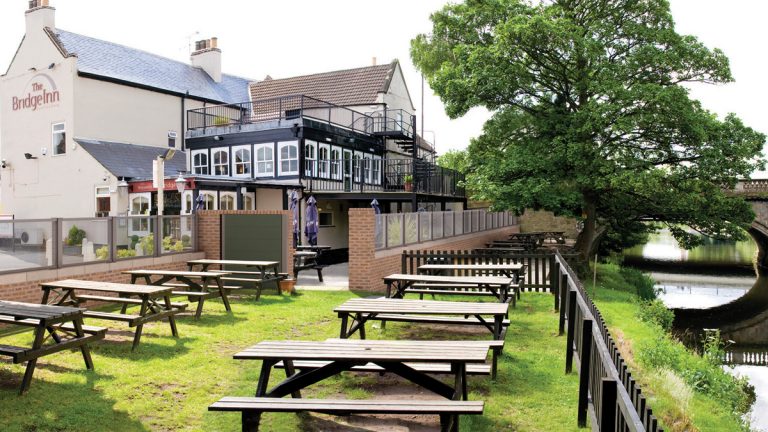
Proposed defences at the Bridge Inn (now the Waterside Inn) by St Mary’s Bridge – Courtesy of GBV


